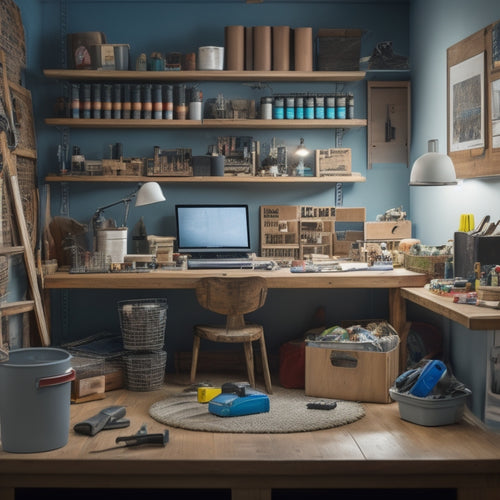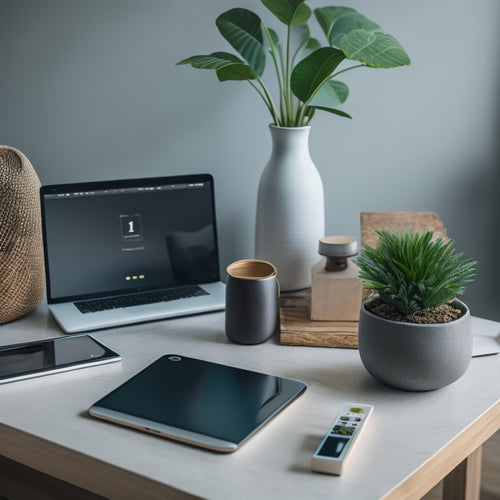
Streamlined IEP Management Boosts Student Success
Share
Streamlined IEP management is essential for student success, as it enables educators to effectively tailor instruction and support to meet individual students' unique needs and strengths. IEP goals exhibit remarkable diversity, requiring a structured approach to organizing materials and data collection. Implementing IEP bins and data collection binders facilitates targeted support and student progress. Digital tracking methods and real-time data analysis inform instruction, while customized bin contents and adaptable scheduling prioritize goal-focused activities. By streamlining IEP management, educators can focus on student support, leading to improved outcomes. A closer examination of these strategies reveals their transformative potential.
Key Takeaways
• Effective IEP management involves tailoring instruction to individual student needs, resulting in targeted support and progress.
• Organizing IEP goals and materials using structured approaches like IEP bins and data collection binders enables efficient data tracking.
• Digital data collection strategies, such as online forms and QR codes, facilitate real-time analysis and swift instruction adjustments.
• Customizing IEP bin contents and layout by goal category, incorporating visual aids, and using color-coding enhances implementation effectiveness.
• Carefully planned schedules with dedicated time slots for goal-focused activities and adaptable time management accommodate diverse student needs.
IEP Goal Variations and Challenges
In life skills/functional academics classrooms, IEP goals exhibit remarkable diversity, reflecting the unique needs and strengths of individual students, and subsequently presenting a complex challenge for educators to tailor instruction and support.
This diversity necessitates goal personalization, where educators must carefully craft objectives that address individual students' needs. However, this personalization can create group challenges, as instructors must adapt their teaching strategies to accommodate varying goals and abilities within a single classroom.
Effective management of these diverse goals is essential, as it enables educators to provide targeted support and facilitate student progress. By acknowledging and addressing these challenges, educators can create a more inclusive and supportive learning environment that caters to the unique requirements of each student.
Organizing IEP Goals and Materials
Effective management of diverse IEP goals necessitates a structured approach to organizing materials and data collection, which can be achieved through the implementation of IEP bins and data collection binders. This system enables teachers to efficiently manage and access materials, ensuring that students receive targeted support.
IEP bins contain materials specific to each student's goals, facilitating easy access and promoting independence.
Data collection binders provide a centralized location for recording progress, allowing for seamless collaboration among staff.
This organization method enables teachers to quickly identify areas of strength and weakness, informing instruction and goal adjustment.
Efficient Data Collection Strategies
Accurate and timely data collection is essential for informing instruction and making data-driven decisions, requiring the implementation of efficient strategies that streamline the process while maintaining precision.
To accomplish this, educators can utilize digital tracking methods, such as online forms and QR codes, to collect data on student progress towards IEP goals. This approach enables real-time data analysis, facilitating swift adjustments to instruction and interventions.
Additionally, digital tracking reduces the administrative burden associated with traditional paper-based methods, freeing educators to focus on data analysis and student support.
Customizing IEP Bin Contents and Layout
By tailoring the contents and layout of IEP bins to meet the unique needs of each student, educators can optimize the organization and accessibility of materials, thereby enhancing the overall effectiveness of IEP implementation.
Customizing materials and layout optimization are essential in ensuring that students receive targeted support.
-
Organize materials by goal category, such as communication or life skills, for easy access.
-
Incorporate visual aids, like pictures or icons, to facilitate understanding for students with diverse learning needs.
-
Use color-coding to differentiate between student bins and materials, promoting a sense of ownership and responsibility.
-
Consider the physical layout of the bin, ensuring that frequently used materials are easily accessible.
-
Regularly review and update bin contents to reflect changes in student goals and progress.
Scheduling for IEP Success
Every student's IEP implementation requires a carefully planned schedule that dedicates specific time slots for goal-focused activities, guaranteeing consistent progress monitoring and data collection.
Effective time management is essential to accommodate the diverse needs of students with varying IEP goals. By allocating dedicated time slots, teachers can facilitate student engagement and guarantee consistent progress towards goal attainment.
Scheduling should be adaptable to accommodate classroom dynamics, student services, and other variables. Color-coding schedules can help highlight goal-focused time, making it easier to prioritize and manage.
Frequently Asked Questions
How Do I Ensure Equal Time for Each Student's IEP Goals in a Group Setting?
Did you know that 95% of students with IEPs require individualized support? To guarantee equal time for each student's IEP goals in a group setting, prioritize time management by allocating specific blocks for goal tracking, adapting to group dynamics, and monitoring individual progress.
Can IEP Bins Be Used for Students With Severe Disabilities or Complex Needs?
For students with severe disabilities or complex needs, IEP bins can be adapted with custom adaptations to accommodate individual progress, incorporating assistive technology, modified materials, and tailored activities to guarantee personalized support and tracking of unique goals.
Are There Specific Data Collection Tools Recommended for Certain Student Populations?
Like a master puzzle-maker, educators seek tailored data collection tools for unique student populations. For students with severe disabilities or complex needs, customized software solutions, such as adaptive assessment platforms, facilitate targeted progress monitoring and nuanced data analysis.
How Often Should IEP Bins Be Updated or Refreshed to Maintain Student Engagement?
IEP bins should be updated quarterly to maintain student engagement, incorporating parent involvement through progress tracking and technology integration for efficient data analysis, ensuring goal alignment and student-centered instruction.
What Strategies Can I Use to Generalize IEP Skills to Other Classroom Settings?
Imagine a smooth skills shift: reinforce IEP skills through peer modeling, where students observe and imitate desired behaviors, and integrate strategies across settings, ensuring consistency reinforcement, thereby fostering generalization and mastery.
Related Posts
-

What Makes Effective Online DIY Home Organization Courses?
You're about to reveal the secrets to transforming your living space into a serene and functional oasis, and it all b...
-

Top Digital Tools for Home Decor Organization
You're looking to take your home decor organization to the next level with the right digital tools. From cloud storag...

